I IDENTITY


 Yaiza Hernández Escobar
Yaiza Hernández Escobar
PHOTOGRAPHIC RECORD OF PROJECT : MY IDENTITY
VISUAL ART AS A TOOL TO SHAPE

SELF AND GROUP IDENTITY IN CHILDHOOD AND TO WORK ON BULLYING, THROUGH CROSSCUTTING AND MULTILEVEL PROPOSALS.
YAIZA HERNÁNDEZ ESCOBAR
OVERVIEW OF THE PROJECT
Abstract

This project discloses an intervention carried out in the School of Early Childhood and Primary Education
Manuel Núñez de Arenas during the traineeship of the fourth year of the degree from January 21 to May 27, 2022. The intervention has been carried out to work on and reinforce the students' own and group identity through art as well as their self-esteem, all of this as a result of a bullying situation. Three artistic proposals have been developed to work on non-normative bodies and skin colors through self-portraits, as well as social identity through the drawing of friends and relatives interacting with a book. Two qualitative evaluation instruments have been used: a rubric and an interview with the students, as well as a semiquantitative one: a table through which the students' reaction to the concept of unique skin colors is observed and quantified.
The results obtained were promising considering the time frame in which the internship was carried out. Thanks to the activities, an improvement in the case of bullying has been achieved, as well as the development of a more positive individual and group perception regarding the diversity of skin colors and non-normative bodies.
OVERVIEW OF THE PROJECT


Introduction
Self-identity, knowing the self, is a continuous and lifelong questioning. From many authors of literature such as Herman Hesse with the Steppenwolf (Hesse, 1990) who questions the duality of the human being (I as beast and rational I, giving rise to two identities) from a spiritual point of view Even authors of social determinism in which the concept of one's own identity is approached as a social narrative, i.e. a construction completely determined by society (Lins and Villegas, 1963).
However, beyond a philosophical approach to the subject, there are psychological characteristics, an identity that leads to a negative or positive perception of oneself, self-esteem. Identity traits that are somewhat quantifiable, without great subjectivity. This identity can be said to be influenced by the socio-economic, cultural, emotional and political context that surrounds the subject (Bandura and Rivière, 1982) and perhaps by genetic causes (Córdoba and Lipko, 2013).
In the case of the Manuel Núñez de Arenas Infant and Primary School (CEIP) (located in El pozo, entrevías, Vallecas), a school characterised by its high diversity ( Fig.1) in terms of socio-economic, cultural and hereditary environment, each pupil has a very marked family and contextual identity. For the construction of a child's identity, this diverse context is fundamental (Bandura and Rivière, 1982) Interaction between them is also fundamental, but in the midst of such identity turmoil, such a strong identity can lead to major conflicts with clashing cultures and result in discrimination and bullying.
This is where visual and plastic art comes in as a main tool to work on these diverse identities and to develop individual and self-knowledge while creating a feeling of collectivity and cooperation in the school group Visual art is a means of free expression and through it, complex concepts and messages can be worked on in a simple way, especially through art applied to everyday life. In my intervention in the school, the main things I have taken into account are the needs and interests of the pupils and the conflicts in the classroom that need to be analysed and worked on. In addition, the pupils' contributions are considered very valuable and feedback is always sought in order to achieve cooperation between the future teacher and the pupils.
OVERVIEW OF THE PROJECT
Introduction

The intervention consists of various activities, with a relationship and continuity between them, worked with approximately 20 children from the "Prigundo B" group (the name given to the merger of the 1st and 2nd year of primary school in the centre), although some proposals have been carried out with the whole year (around 61 children). Work has been carried out from the Art on Mars workshops (in Prigundo's class, workshops are held every Wednesday from 12.30-14:00, including art, mathematics and geometry, with a rotating organisation) and the subject of values and ethics. In addition, work is carried out over a long period of time, during the 7 months of work experience that I have been able to do at the centre, due to the fact that although the observations that lean more towards the quantitative have been carried out after 4 months, the previous work on the connection, link and trust with the students has taken place before that time. This connection has been fundamental in order to work on these complex issues in the classroom in a natural way.
The project has had to be based on transversal and multilevel proposals due to the curricular demands and the disparity in the level of the classroom. For this reason, the planning and design process of the intervention is of vital importance in order to develop open proposals that each student can work on according to their abilities, all the while encouraging creativity and freedom of expression, which is fundamental in their development (Carpio et al., 2007). Within the framework of this intervention, reconfigurations of identity have been observed among the students, as well as the improvement of a bullying conflict in the classroom. It is considered that the intervention has been a stimulating factor and coherent with what was worked on in a tutored manner with respect to this conflict. These processes have also been related to work methodologies based on collaboration and group identity, through cooperation, as well as the development of individual identity.
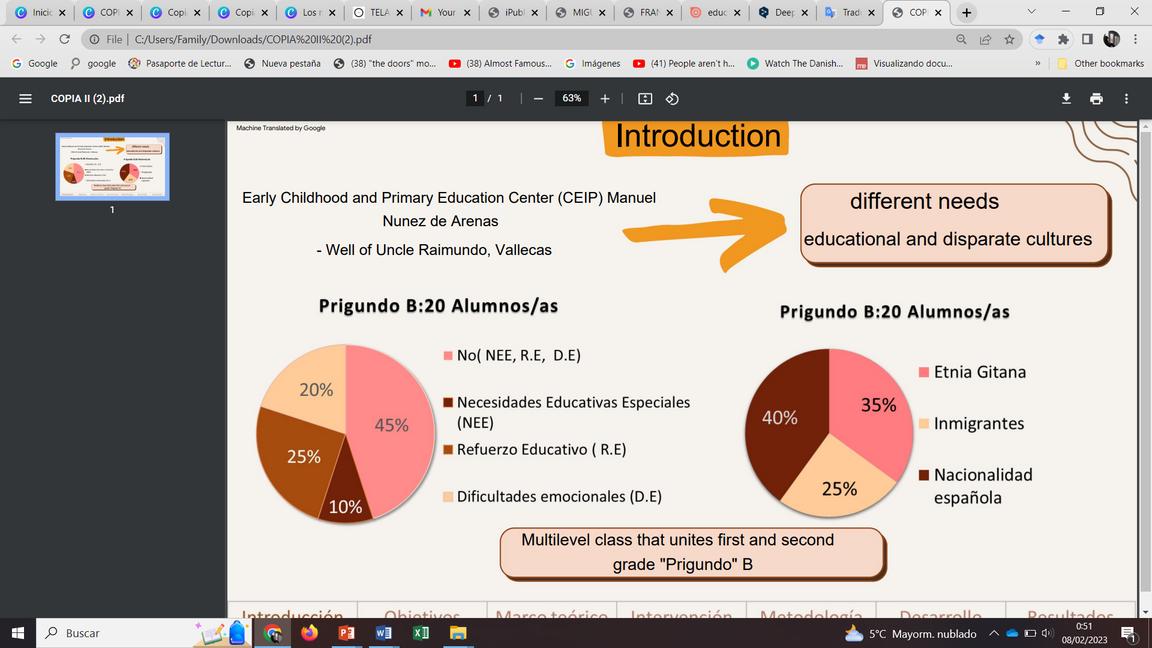
OVERVIEW OF THE PROJECT


Initiative and origin
The project starts from the observation of a case of bullying related to the cultural origin of a pupil and partly his skin colour. After this, it was decided to make a series of artistic proposals that have continuity and coherence and support the work done by the tutors in this case of bullying. It is considered important to work on this case not only with those involved but with the whole class, as they are the observers of abusive behaviour that is normalised. In this dissertation, the aim is to go further and deal with the case of bullying from the perspective of self-identity and group identity, in order to investigate the impact of bullying on them. Therefore, I set three main research questions as the driving force for the conceptual framework described In the context of the intervention, I was also able to articulate my personal interests, which are directly related to the use of art as a tool to change and improve the social and contextual reality of the subject, following the famous phrase of Berch (2015): "Art is not a mirror to reflect reality, but a hammer to shape it".
OVERVIEW OF THE PROJECT
Initiative and origin
Art
identity

The development of this work has also been driven by a characteristic of the teaching given in the classroom with respect to art workshops, in which there was a lack of artistic proposals that contained women as an artistic reference The project also seeks to introduce students to other types of artistic proposals that are transversal and versatile and help to foster their creativity to a greater extent. This is relevant for the teaching community, as the aim of this final degree project is to demonstrate how teachers can design open proposals through art that work on curricular content but also respond to classroom problems linked to social problems. In addition, it is relevant to show how one of the ways of working on bullying can be through art focused on the concept of identity, since this is the one that is affected by it, not only with respect to the participants in the situation, but with respect to the whole classroom

OVERVIEW OF THE PROJECT OBJECTIVES
General objective
To highlight the importance of art and its use as a transformative tool to work on self-identity and group identity through multilevel and cross-cutting proposals.

Specific objectives
To identify how children's identities are shaped and how they can be affected by bullying (psychological abuse).
To demonstrate how relevant social issues can be worked on in the classroom through art, adapting to the needs of each pupil.
OVERVIEW OF THE PROJECT DEVELOPMENT
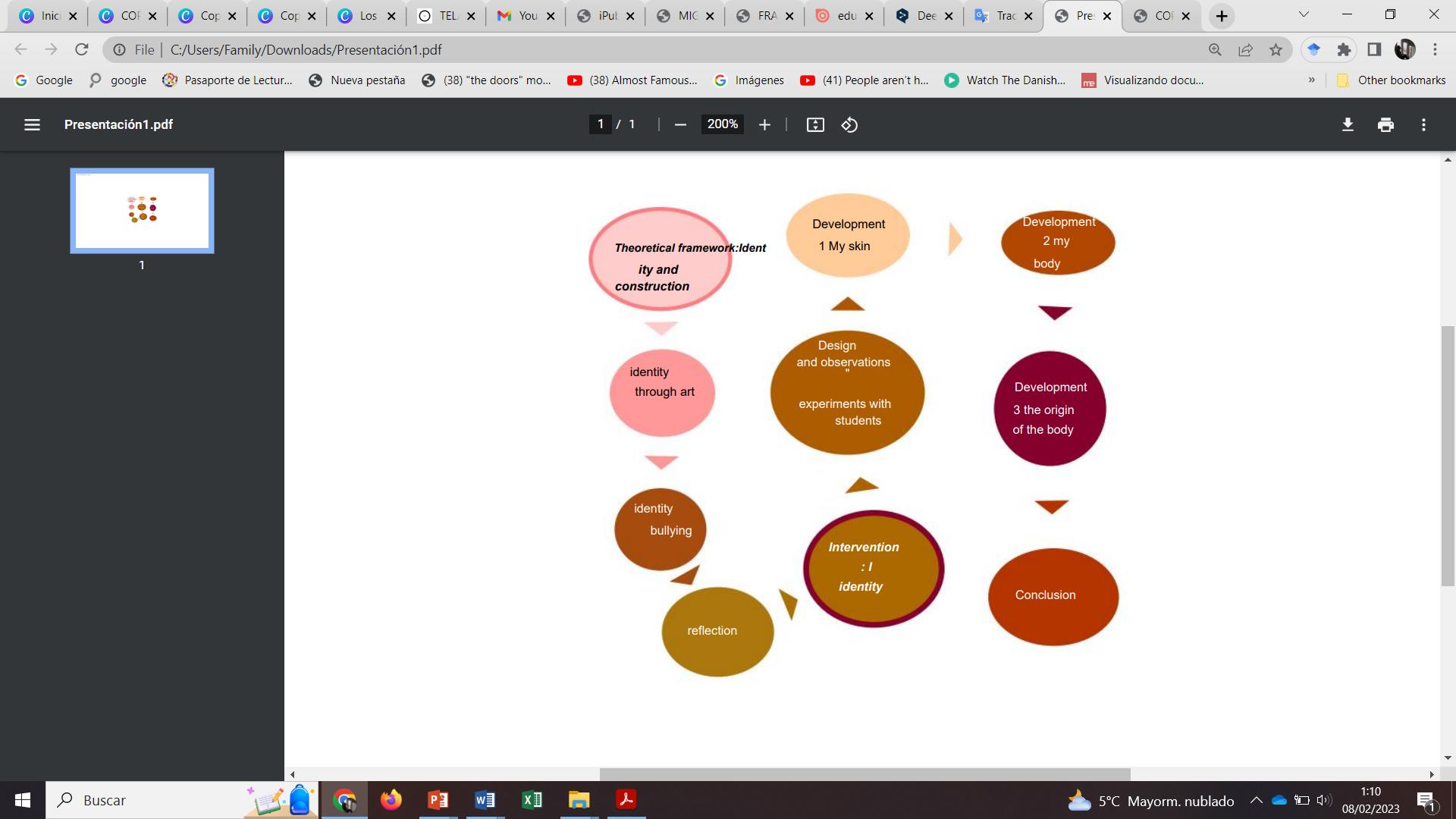
OVERVIEW OF THE PROJECT LINK TO THE THEORETICAL BACKGROUND

For Goffman (2006) there is a multiplicity of identities which he summarises in three: personal identity, social identity and the self All three are in a state of symbiosis The identity of the self is associated with a self-conception as a person, while the other two are associated with the social context and the subject's interactions with it. Within these identities, which are largely constructed by the context, there are a series of attributes that according to Goffman (2006) can be of prestige, referring to those that benefit the individual, and stigmas that hinder the construction of the identity of the self and make it negative. The two identities that are fully affected by this are the social and personal identities because they are, in the words of Goffman (2006): "The expectations and definitions that other people have of the individual On the other hand, the identity of the self is, in the first place, a reflexive subjective matter, which must necessarily be experienced by the individual".

OVERVIEW OF THE PROJECT LINK TO THE THEORETICAL BACKGROUND
The concept of social identity is the one that allows us to consider the concept of stigmatisation and that of personal identity the management of stigma, however, the identity of the self, the third one, allows us to deal with how the individual feels in the face of this stigma and how he or she manages it. This explains that the construction of the identity of the self is its own construction influenced by these other two types of identities
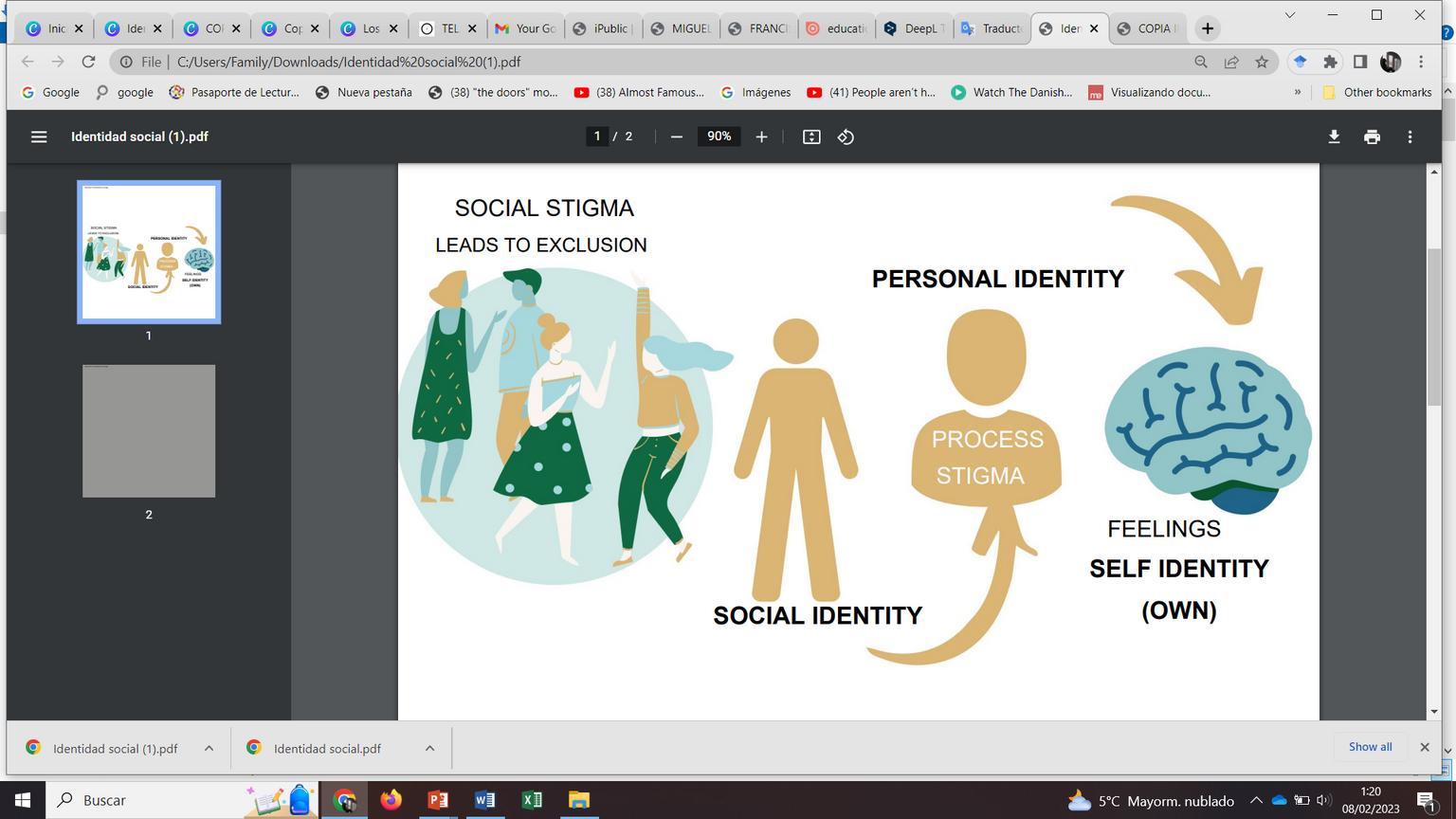
OVERVIEW OF THE PROJECT LINK TO THE THEORETICAL BACKGROUND
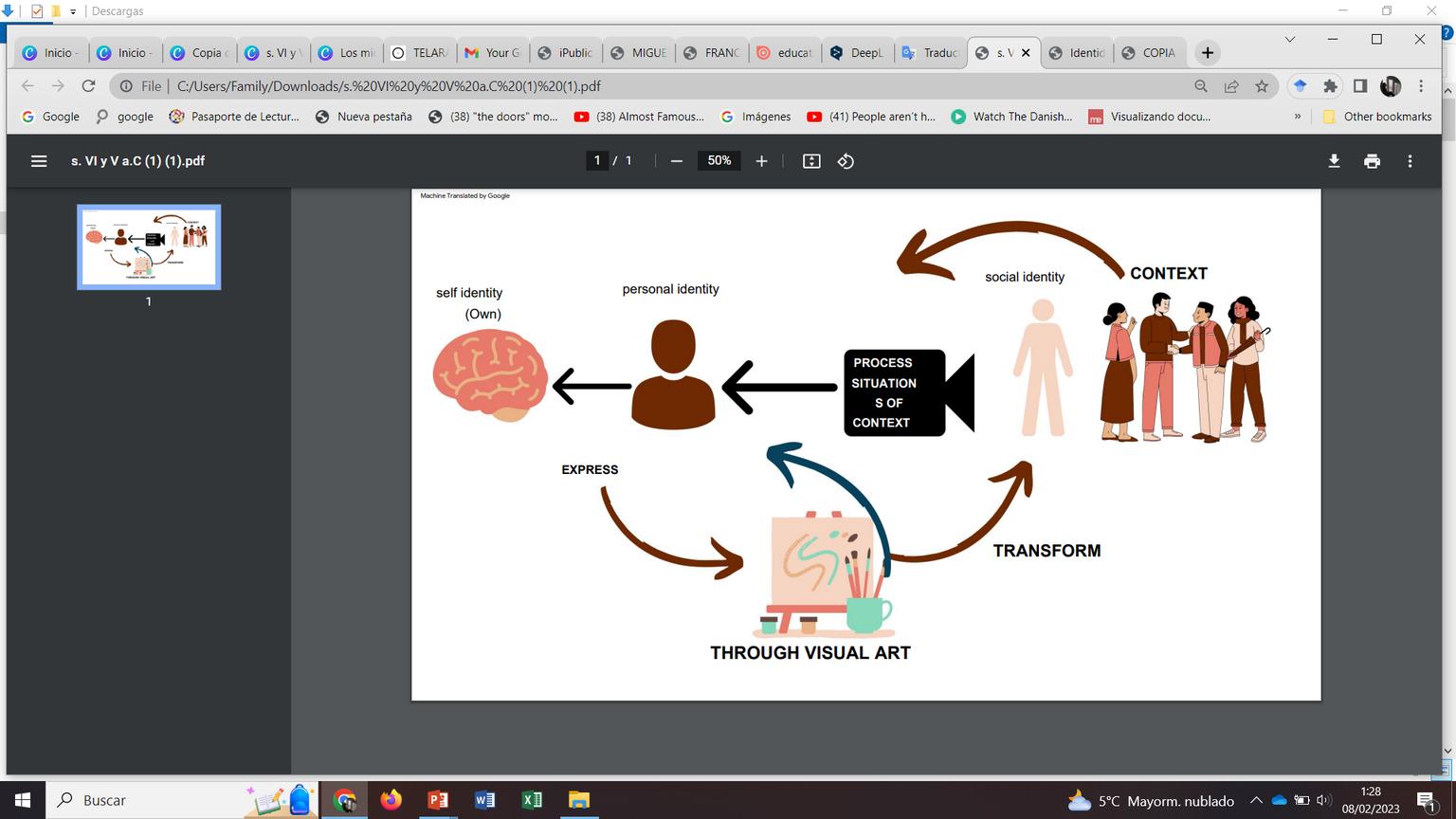
Through this medium, students can define their identity and configure and reconfigure some aspects of it, such as stereotypes, and the stigmas previously discussed in defining identity according to Goffman (2006). By being able to define their identity through art and not just reflect it, a cyclical effect is produced. The subject has a perception of the context (social identity) in which he lives, processes it (personal identity) and internalises it, which leads him to form his own identity (identity of the self), but at the same time he can express that identity through art by reconfiguring it and modifying the context. By modifying the context, it leads him to process it and reconfigure his self identity again (Fig. 17).
Modifying the context is thus another function of visual art, an aspect that influences self and group identity.
OVERVIEW OF THE PROJECT INTERVENTION
The purpose of this work is to demonstrate that visual art is a very effective tool to work on identity in pupils and that this also helps in cases of bullying To work on identity, the project focuses on deconstructing stereotypes, celebrating differences. In order to deconstruct stereotypes, I work with self-portraits to influence identity. However, these proposals do not have an immediate effect, so the profound effects on the development of identity cannot be seen at first glance or in such a short time frame. Independently, I have worked with certain assessment markers as well as observation factors used.
a) Do the designed art proposals influence the individual and group identity of the pupils?
b) Can the designed visual art proposals help in the deconstruction of stereotypes related to: skin colour, body types, cultural roots and gender roles?

c) Can the designed proposals improve the case of bullying?
d) Do they promote coexistence and cooperation in the classroom?
e) Are the proposals understood?
f) How appropriate are they for pupils aged 6-8 years?
g) How appropriate are they for the context and the classroom?
h) What are their advantages and disadvantages?
OVERVIEW OF THE PROJECT INTERVENTION

PRESENTATION MATERIAL
QR codes are presented for the three presentations used in the activities as well as for the self-made animation. The process dossier of the workshops is also shown, documenting more extensively the process and its result.
Almost all the images are by me (Yaiza Hernández Escobar), except for those made by my professional tutor at my request.
Presentation in canva for workshop
My Animation

Presentation in canva for workshop
Installation in the corridor
Presentation in canva for workshop
1: MY BODY
2: MY SKIN
3: THE ORIGIN OF THE BODY
OVERVIEW OF THE PROJECT INTERVENTION
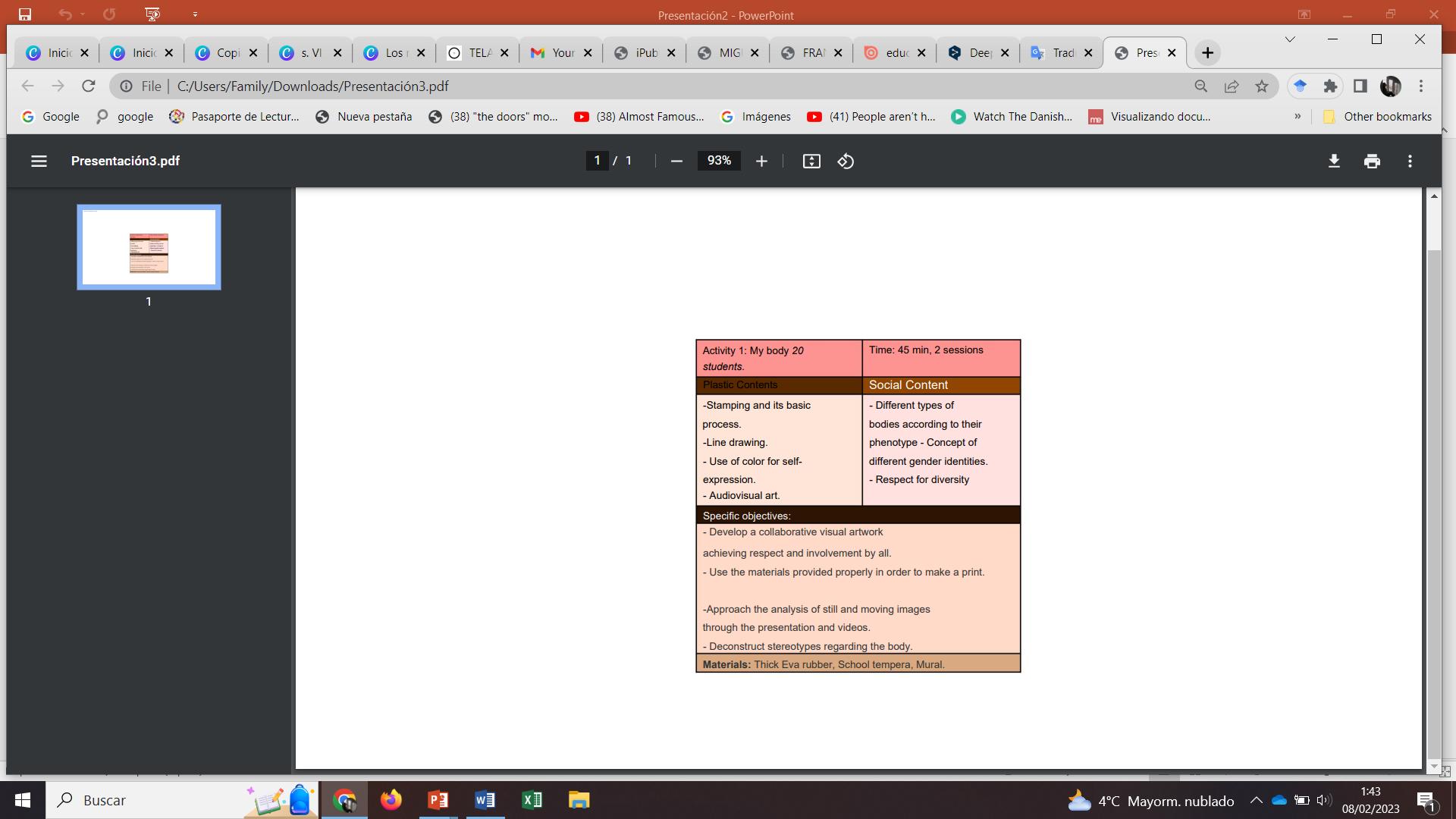
BRIEF DESCRIPTION OF ACTIVITIES
ACTIVITY 1
The activity consists of two parts:
- The first part deals with the viewing of a presentation with images of different body types, information on stamping and two videos. One of them is a clip from the film Little Miss Sunshine (Faris and Dayton, 2006) in which the main character appears in a beauty contest dancing on stage despite not meeting beauty standards. The other is a self-drawn animated short film featuring two children with their biological gender determined who decide to change it.
- The second part consists of the drawing of the students' own body on a piece of A5 format eva rubber with high grammage (width) to cut it out and make a stamp of it.

1 : MY BODY
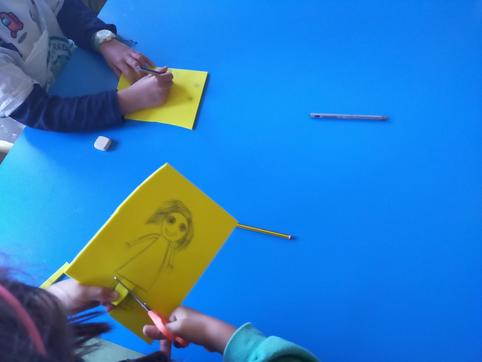
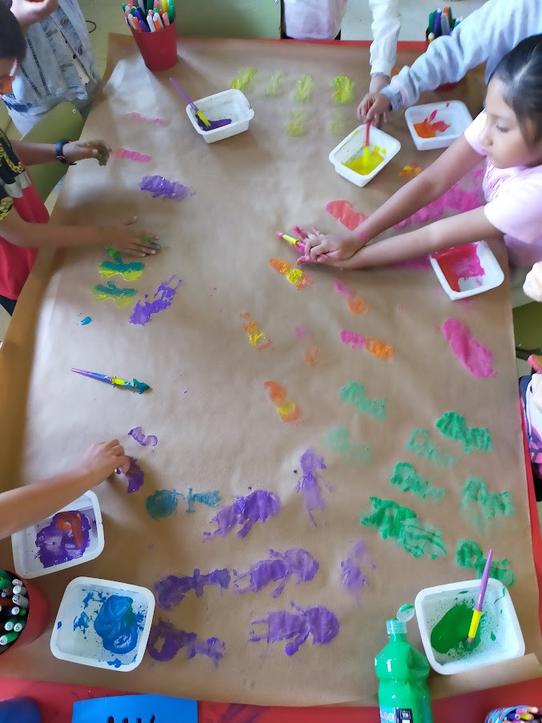
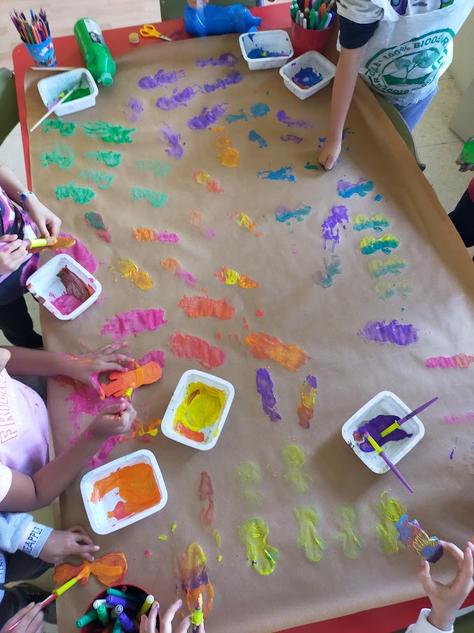
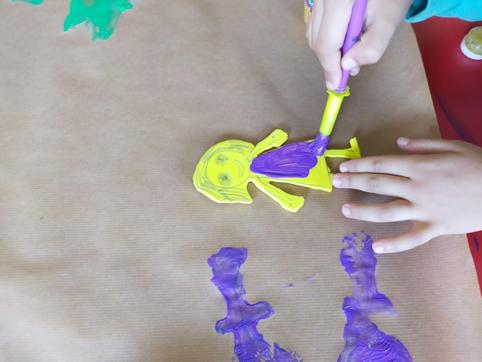


1 : MY BODY

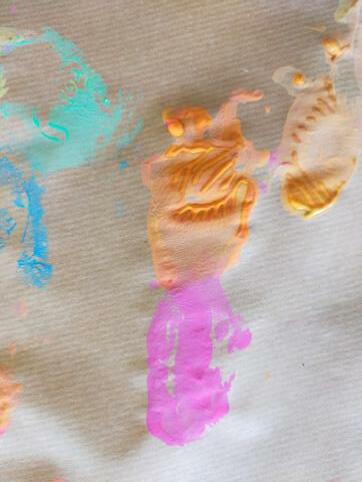


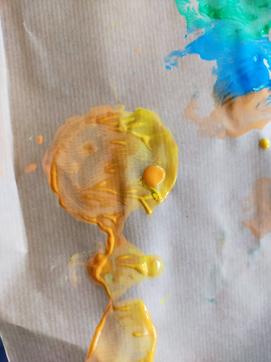

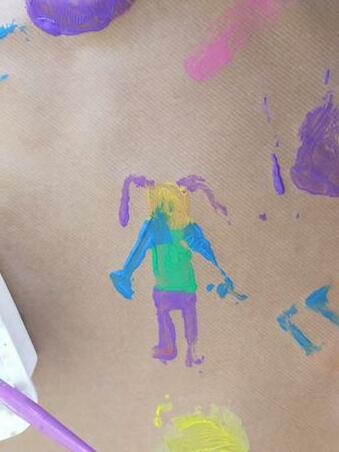
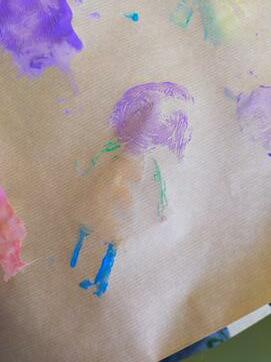

OVERVIEW OF THE PROJECT INTERVENTION BRIEF DESCRIPTION OF ACTIVITIES ACTIVITY

2
This activity is carried out in the Art on Mars workshops, where art and geometry are worked on. It is important to clarify that when we talk about deconstructing the concept of race, it is from the point of view of denouncing discrimination and racism. The concept of race is treated as a social construct designed to discriminate, as understood by the artist Angélica Dass (2014) on which the workshop is based. Specifically it is based on her work Humanae, mentioned in the theoretical framework, and on her educational workshops where she extensively develops the aforementioned concept.
As explained in the report, the activity consists of three parts:
- The first part deals with the viewing of a presentation in which Angelica Dass's work Humanae, (Dass, 2022) is introduced, in this presentation there are questions designed to question the established in the students and invite debate in the assembly, such as what is the colour flesh? With an image of different coloured pencils. The aim is to reflect on small, imperceptible discriminatory details of everyday life in the classroom
- The second part consists of making a self-portrait using plastic geometric shapes and colouring it with one's own skin colour For this, mirrors are used (so that the pupils can see their own reflection) and a palette of their own colours is used to arrive at the tone that is closest to their real skin colour.
- The third part is the installation in the corridor set up with the help of the pupils who make the collaborative work and give it meaning, because the beauty of diversity lies in the comparison of these very different skin tones.







2: MY SKIN





2: MY SKIN


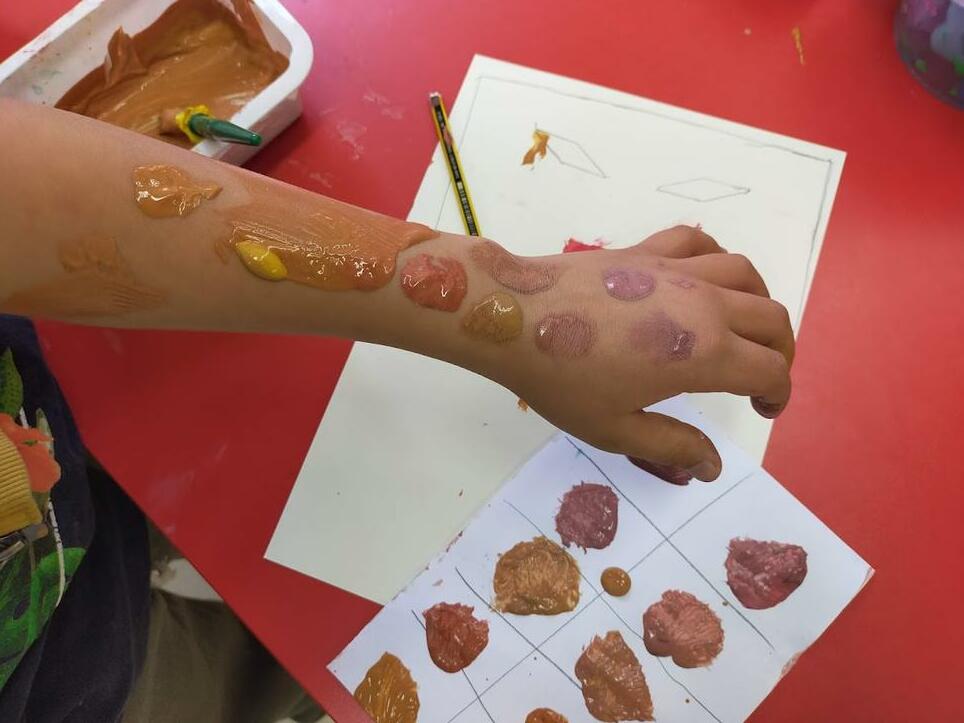

2: MY SKIN




2: MY SKIN







2: MY SKIN







2: MY SKIN
2: MY SKIN
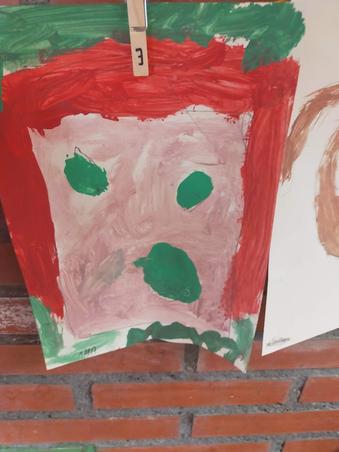
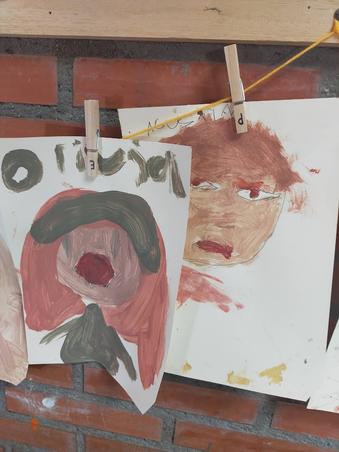

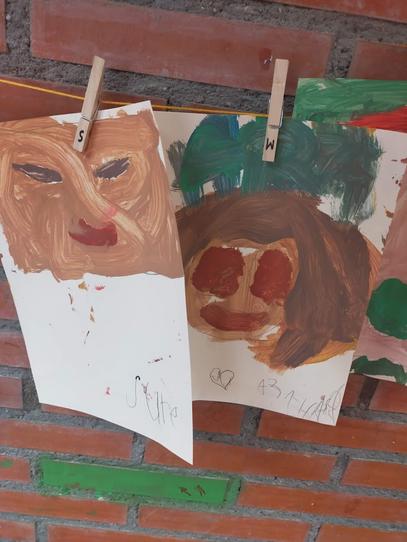



OVERVIEW OF THE PROJECT INTERVENTION
BRIEF DESCRIPTION OF ACTIVITIES ACTIVITY 3

This activity is carried out in the subject of values. It is based on a story, a self-made narration worked on in the 4th grade subject "artistic resources, techniques and procedures in infant and primary education".
This story serves to reinforce the previous activity, fostering a sense of belonging and group identity in the pupils. The narrative, inspired by the Big Bang theory, has two parts, one in codex (book) format and the other in tunnel book format with several layers or templates, some of which move and allow the pupils to interact and be included in the book. The story begins with a ball of energy that is approached by skin-coloured particles and explodes, generating humans who work together to make the earth a better world
Like the narration, the activity has two parts:

- The first part consists of reading the narrative to the pupils in a dramatised way
- The second part consists of being included in the narration, in the tunnel book, by moving the layers (or templates) that make it up To do this, a template or card has been created on which the pupils have to draw themselves and colour in their skin colour in order to be included in the book. To colour in, special colours from the Crayola brand called "Colours of the world" are used They have more than 24 different skin tones, and on the sides colour palettes to compare the skin and to identify and choose the right compare the skin and identify and choose the most similar own colour
3: ORIGINS OF THE BODY
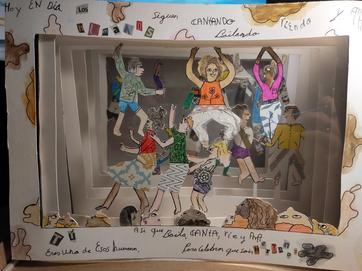


During the workshop, I read the book to the students in the assembly. To protect the identity of the students, the photographs have been taken from an angle where the whole assembly is not shown.






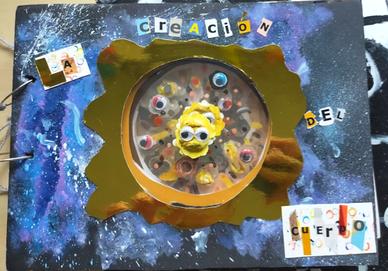
Proceso en PRIGUNDO B, clase en la que se centra la intervención:
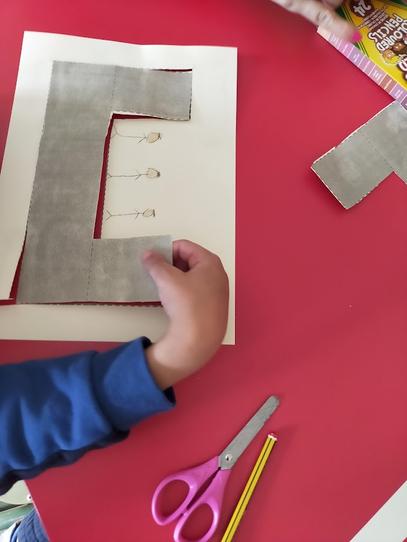


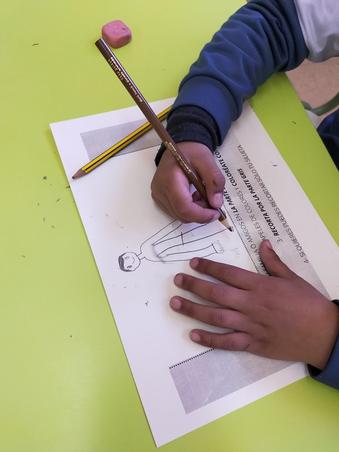



Workshop sheet

"Colors of the world"crayola.
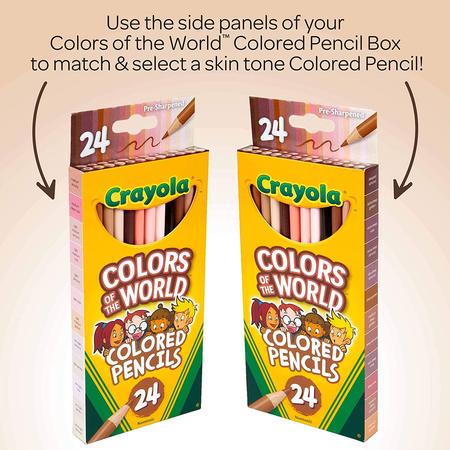






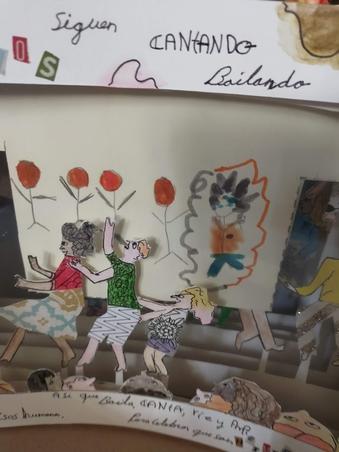

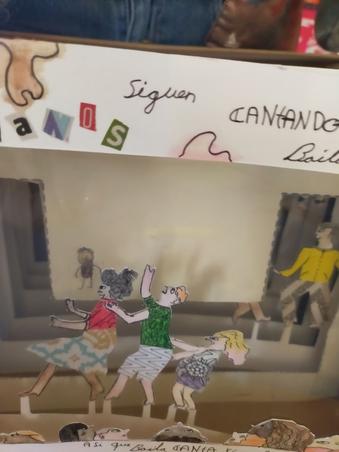






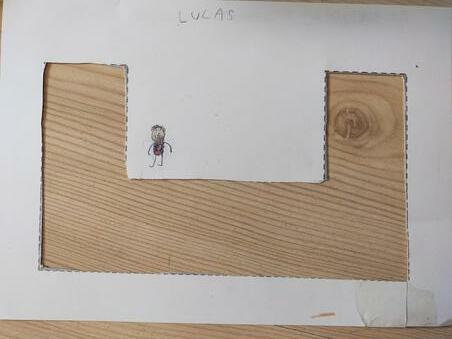
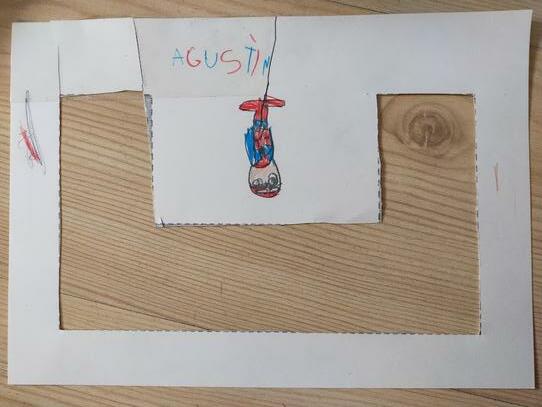
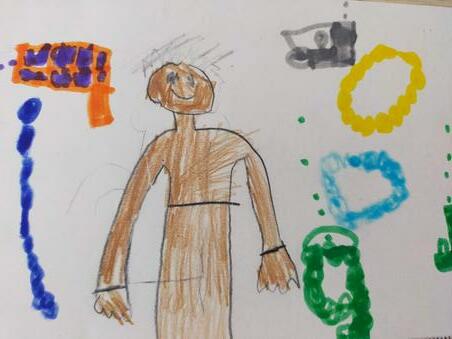

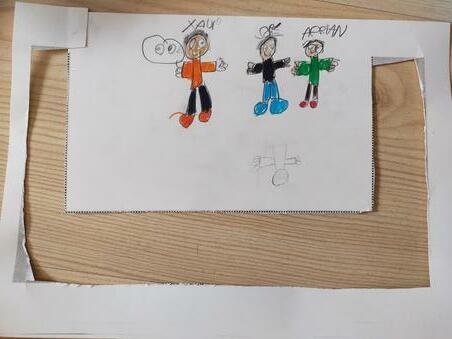
Image: It has been observed that two friends have been drawn alike, which may mean that within the group of friends they have some kind of "role" or are some kind of character.
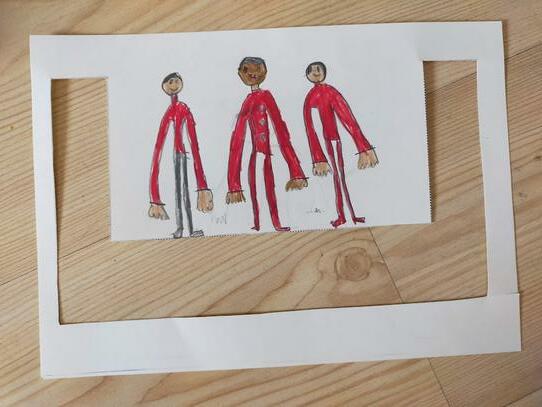
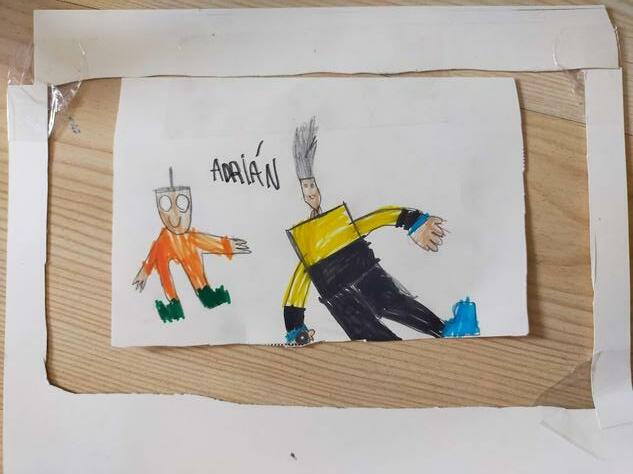
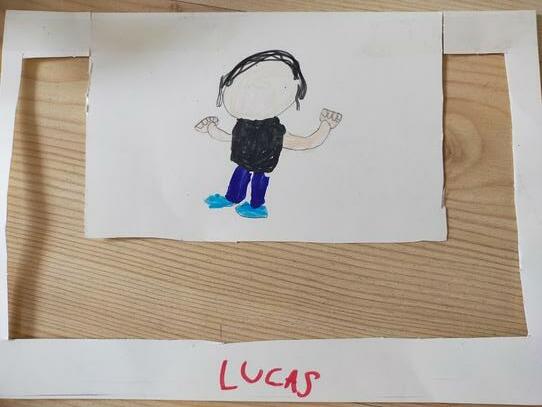
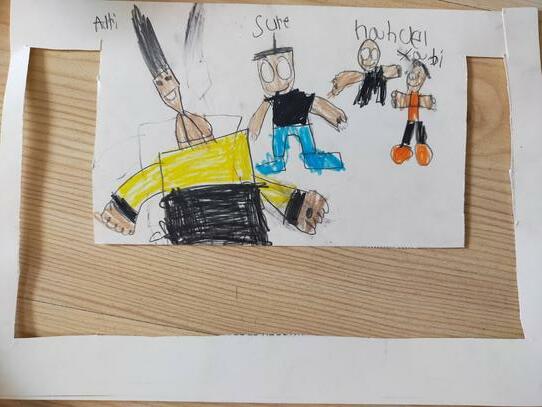



 Yaiza Hernández Escobar
Yaiza Hernández Escobar




































































































